Silently claiming the top spot in the Solana DEX market share, how did HumidiFi achieve this?
You can think of it as the on-chain version of Citadel Securities, a fully blockchain-based and permissionless market maker solution.
Original Article Title: "Solana's 'Invisible Champion': Rising to First in Market Share Quietly, How Did Dark Pool HumidiFi Do It?"
Original Article Authors: TATO, azsui
Original Article Translation: Tim, PANews
PANews Editor's Note: PANews Flash on November 3 — HumidiFi's 30-day trading volume surpassed Meteora and Raydium, leading the Solana DEX market. Most of the market is unfamiliar with HumidiFi, and the project's official Twitter account has only 12,000 followers. For this "invisible champion," PANews has organized and translated the relevant content of authors TATO and azsui, including an introduction to the HumidiFi project.
Body:
What Is Prop AMM? And What Is HumidiFi?
Traditional Automated Market Maker (AMM):
• Allows any user to provide liquidity→earn trading fees
• Uses a passive pricing mechanism (x*y=k constant product formula)
• Requires TVL to achieve deep liquidity
• Liquidity Providers (LPs) face impermanent loss risk
Professional Market Maker Automated Market Maker (Prop AMM):
• All liquidity provided by professional market makers
• Pricing strategy continuously updated and independent of user trading behavior
• Algorithm actively manages inventory like a centralized exchange market maker
• No public liquidity providers (LPs) = retail users do not bear impermanent loss
Core Features of HumidiFi:
• Rapid quote updates, performing multiple repricings per second
• Private order flow mechanism reduces volatility and front-running risk
• Achieves capital efficiency by precisely concentrating liquidity in the highest-demand areas
• Operates entirely on-chain with an algorithm
• Accessible only through the Jupiter route
This can be understood as the on-chain version of Citadel Securities, a fully blockchain-native and permissionless market maker solution.
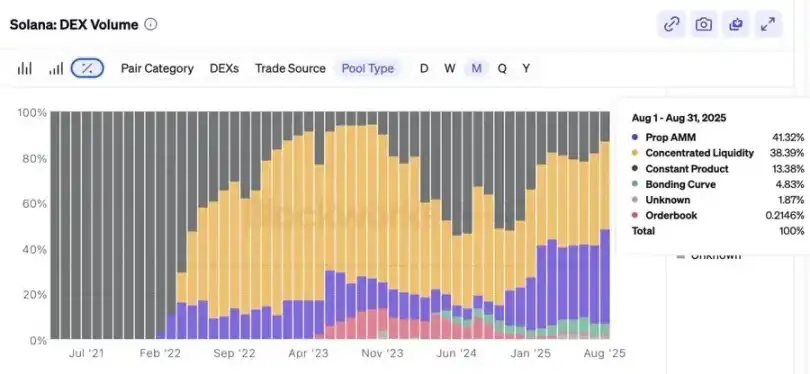
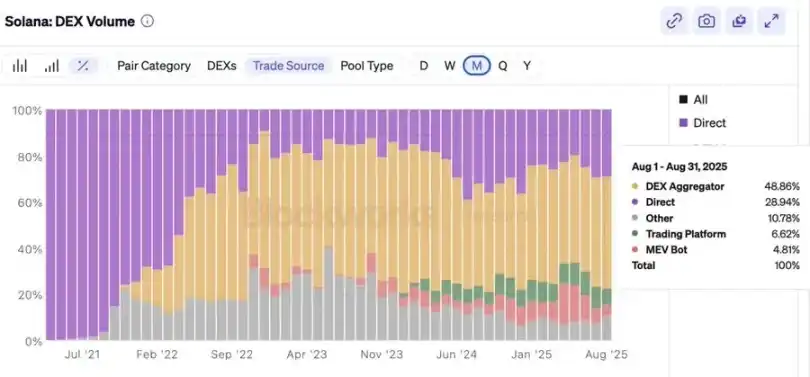
HumidiFi Achievements
Trading Volume Leadership
• Achieved approximately $1 trillion in total trading volume within 5 months
• Accounted for 35% of the total DEX trading volume on the Solana blockchain
• Daily trading volume consistently ranged from $10 billion to $190 billion
• Last month's trading volume reached $340 billion (surpassing the total of Raydium and Meteora)
Execution Quality
• Narrower spread for SOL/USDC compared to Binance
• More competitive quotes → lower slippage, close to minimal price impact
• 99.7% fill rate (almost zero trade failures)
Capital Efficiency Marvel
• Processed $8.19 billion in daily trading volume with only $5.3 million TVL
• Achieved 154x capital efficiency (compared to around 1x for traditional AMMs)
• Oracle updates require only 143 computation units (approximately 1000x lighter than regular swaps)
The result? Users get better prices, without even needing to know that HumidiFi is behind the operation.
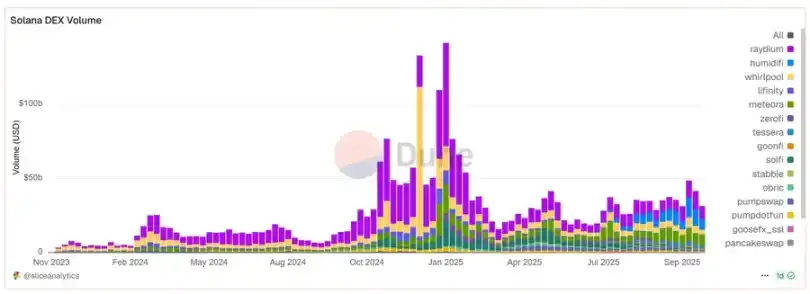

Why Choose HumidiFi?
Technological Superiority
• Ultra-lightweight oracle updates require only 143 computation units
• Sub-Millisecond Price Refresh (Competitors take 15-30 seconds)
• Tight liquidity around oracle-based price aggregation = Ultimate capital efficiency
Jupiter Ecosystem Integration Advantage
• Jupiter processes 80%+ of Solana's swap volume
• HumidiFi captures 54.6% of Jupiter's professional market maker route
• Better prices → More routing options → Higher trading volume → Price edge amplification (Flywheel Effect)
Stealth Advantage
• No front-end interface
• Private order flow reduces MEV attack risk
• Anonymous operation = Reduced regulatory target risk
First-Mover Scale Effect
While competitors aim for millions, HumidiFi achieves a billion-asset breakthrough directly. In the DeFi market, liquidity attracts liquidity, and they have seized the initiative.
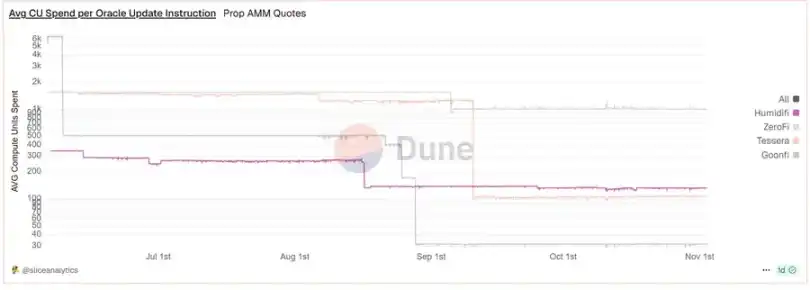
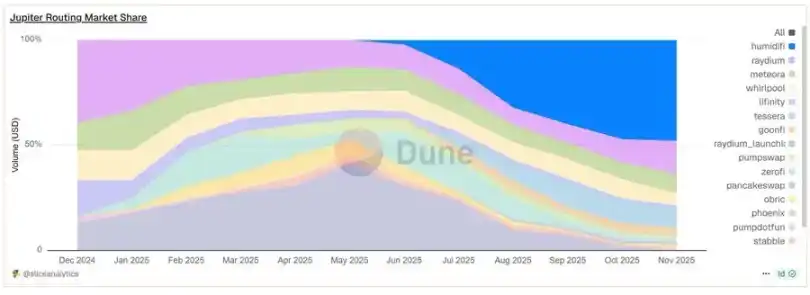
The Future is Here: HumidiFi Will Lead Solana DeFi Development
In short, it always gives you the best quote. For users, this is our core need.
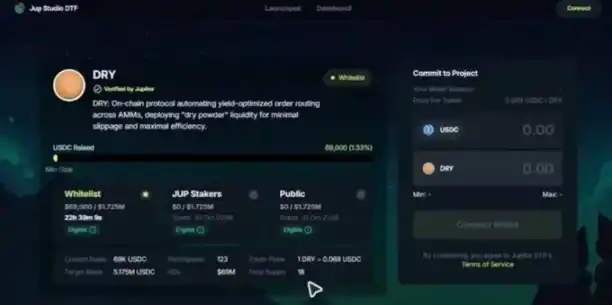
Conclusion
HumidiFi is a professional AMM protocol, accounting for over 50% of total DEX trading volume.
Disclaimer: The content of this article solely reflects the author's opinion and does not represent the platform in any capacity. This article is not intended to serve as a reference for making investment decisions.
You may also like
Supreme Court Decision on Tariffs May Require $140 Billion in Refunds and Prompt Federal Reserve to Lower Rates
- UBS warns a Supreme Court ruling against Trump's tariffs could force $140B refunds, straining U.S. fiscal resources and prompting potential Fed rate cuts. - The refunds stem from 39% Swiss tariffs deemed potentially unlawful, with fiscal impact equivalent to 7.9% of 2025's projected budget deficit. - Legal challenges highlight executive overreach risks, while reduced tariffs could boost consumer spending and ease inflation, creating room for Fed easing. - Swiss business leaders have lobbied Trump to lowe

Ethereum Updates: TRON's GreatVoyage: Strengthening USDT's $122B Network to Compete with Ethereum

Arm's Low-Power Architectures Overcome AI Energy Constraints, Fuel 34% Growth in Revenue
- Arm Holdings reported $1.14B Q3 revenue, 34% YoY growth surpassing forecasts, driven by AI/data center demand. - Royalty revenue rose 21% to $620M while licensing revenue jumped 56% to $515M, reflecting strong IP adoption. - Strategic shift to develop full-chip solutions via Compute Sub Systems aims to compete with Nvidia/Amazon in AI hardware. - Parent company SoftBank explored Arm-Marvell merger to strengthen AI infrastructure, highlighting industry consolidation trends. - 20 "buy" ratings and $155 pri

Fed Faces a Choice: Boost Growth or Curb Mounting Debt?
- U.S. household debt hit $18.59 trillion in Q3 2025, driven by rising credit card, student loan, and home equity debt with delinquency rates at multi-year highs. - The Fed initiated rate cuts amid slowing job growth but faces a dilemma: easing economic strain risks inflating a consumer debt bubble while tightening worsens defaults. - Retailers, banks, and auto lenders face fallout as discretionary spending declines and loan defaults rise, while essential goods and debt collectors see increased demand. - P

